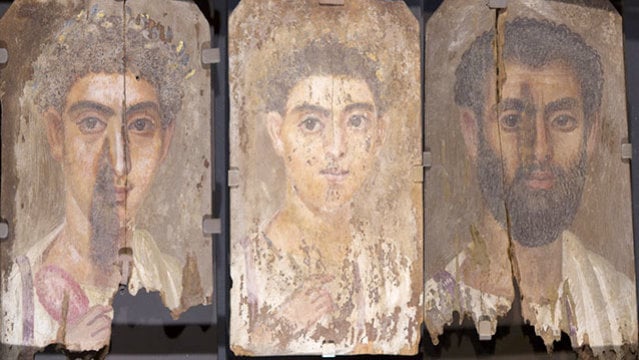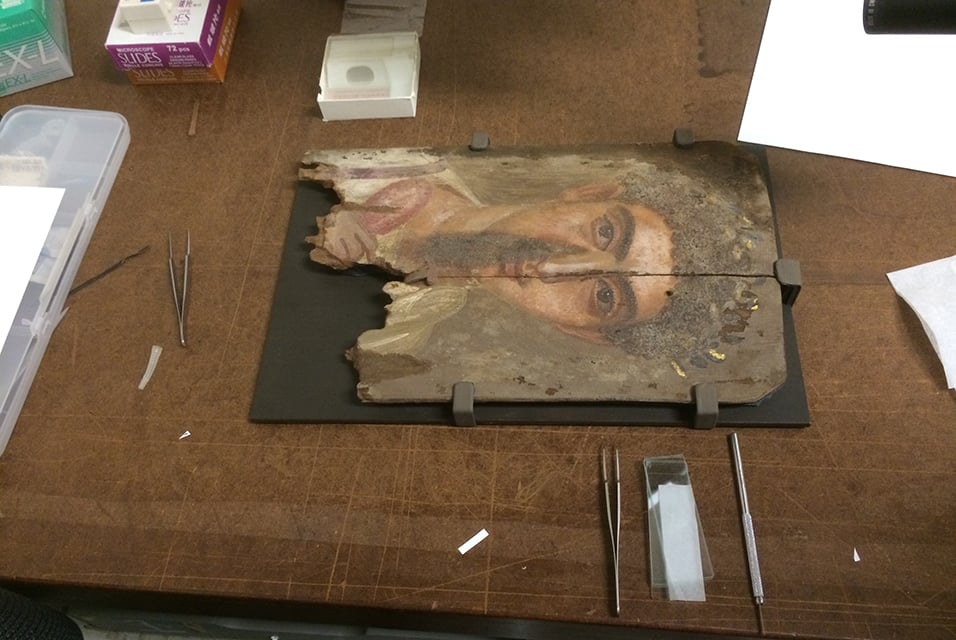Art World
New Research Shows That Egyptian Artists Used Rare Blue Pigment in Ancient Portraits


Sarah Cascone


A Roman-era Egyptian mummy portrait, shown in natural light shows no traces of the blue pigments underneath.
Photo: Phoebe A. Hearst Museum of Anthropology, University of California, Berkeley.
Scientists and art conservators have discovered blue pigment used for subtle shading in ancient portraits, defying expectations for how the ancients used the synthetic pigment.
The findings come from a joint team from Northwestern University and the Phoebe A. Hearst Museum of Anthropology at the University of California, Berkeley, which studied 15 Roman-era portraits of Egyptian mummies excavated over a century ago.
Synthetic pigment was found in six of the 15 paintings, but the blue was beneath or in conjunction with other more common colors. Developed by the ancient Egyptians, the pigment was manufactured from silica, lime, copper, and alkali.
“The discovery changes our understanding of how this particular pigment was used by artists in the second century A.D.,” said Marc Walton, a scientist at Northwestern University, in a statement. “I suspect we will start to find unusual uses of this colorant in a lot of different works of art, such as wall paintings and sculpture.”

The Roman-era Egyptian mummy portraits in natural light show no traces of the blue pigments underneath.
Photo: Phoebe A. Hearst Museum of Anthropology, University of California, Berkeley.
Egyptian blue was popular in the Mediterranean region prior to the Greek period, when the palette was largely limited to yellow, red, black, and white. Most Roman-era painters took their cues from the Greeks—or so it appears to the naked eye.
“When we started doing our analysis, all of a sudden we started to see strange occurrences of this blue pigment, which luminesces,” explained Walton. “We concluded that although the painters were trying hard not to show they were using this color, they were definitely using blue.”
“We see how these artists manipulated a small palette of pigments, including this unusual use of Egyptian blue, to create a much broader spectrum of hues,” added Hearst Museum conservator Jane L. Williams.
The team, working together as part of the Northwestern University-Art Institute of Chicago Center for Scientific Studies in the Arts, has released their findings in a study published in Applied Physics A, a peer-reviewed journal.
Related Stories:
Curse of the Mummy’s Mask Lifts in St. Louis
Secrets of the Mysterious Ancient Egyptian Animal Mummies Revealed